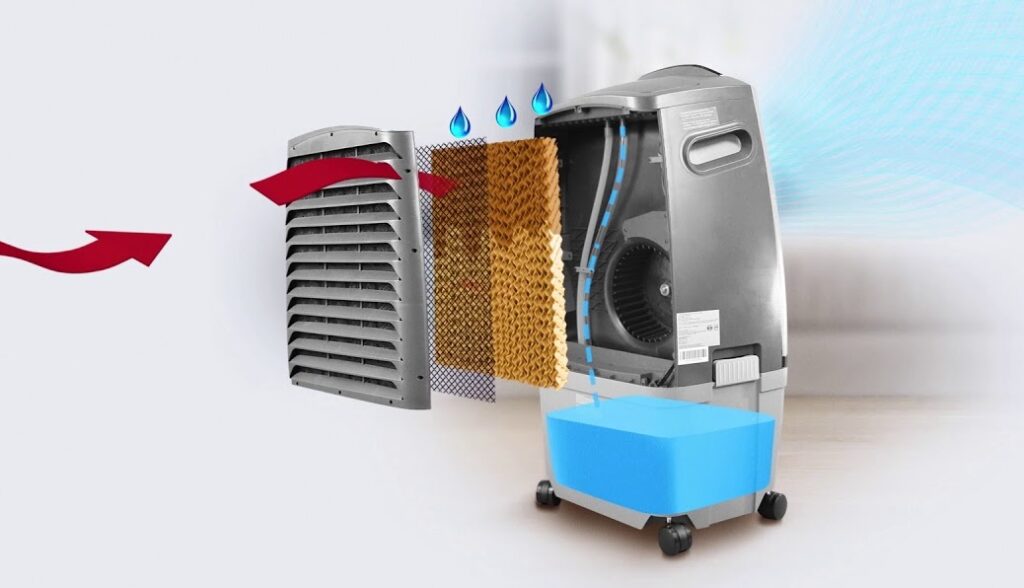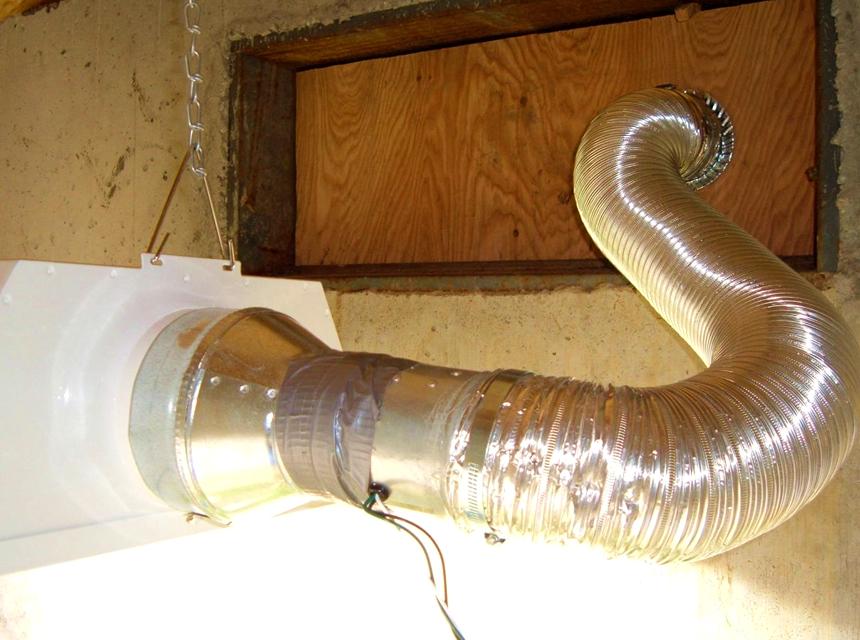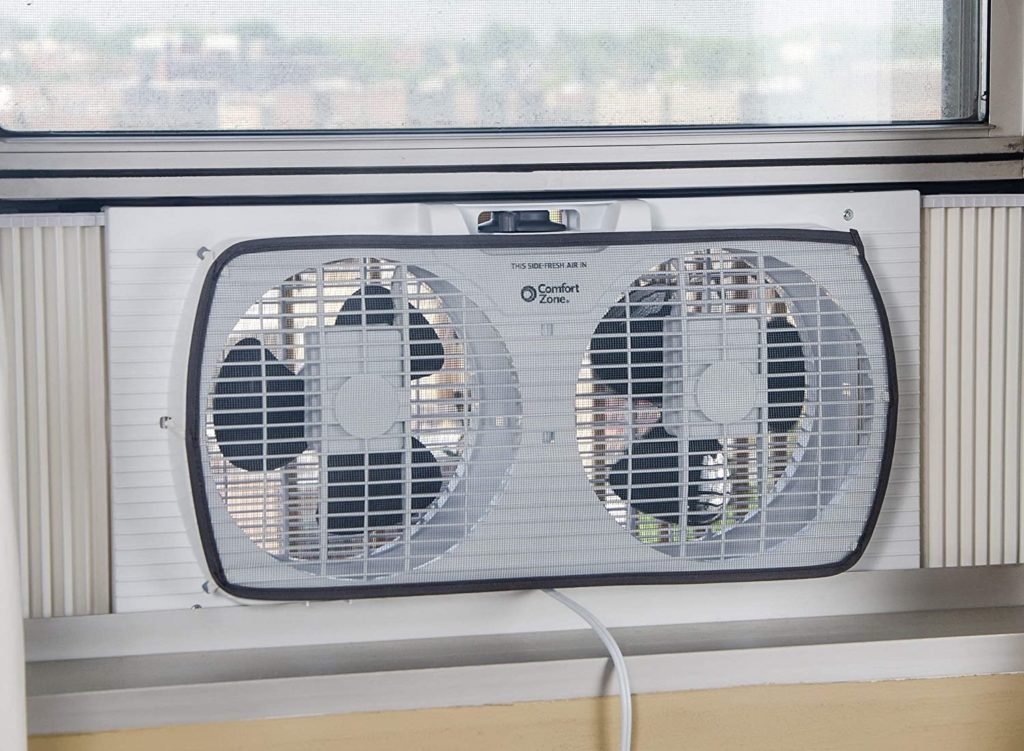

If the temperatures get high enough, staying in your own home may become uncomfortable. Fortunately, you can counter this by buying one of the best whole house fans in the market. These alternate hot air inside for the cold air outside the house.
There are, of course, many high-caliber products of the same nature in the market and specifically on Amazon. Among them, our team has reviewed about 20 great offerings. However, not all whole-house fans are good enough that we can recommend them to you. As such, our comparison table below only features five fans. Of the five, the QA-Deluxe 4800(W) takes the top spot. You have the option of installing the device either in a one-story or two-story house. Also, there are a couple of innovations that allow the device to be quiet in operation. This is in addition to easy installation that will only need you to set apart an hour and a half. In fact, all the devices we feature on the list have many positive attributes, as well.
The individuals on our team have outdone themselves looking into every nook and cranny and finding all the information there is on said devices. As such, each product has been graded according to the following: coverage area, CFM, type of fan, the weight of the invention, and even additional features. As mentioned above, there is a comparison table structured according to the ratings each device gets. Once you are done reading that, you move on to the in-depth reviews section, where we take a deeper look into the products. A bonus section presents itself in the form of a buying guide giving you all the information you would need to buy the best whole house fan.
Other features: option of On/Off remote control, HI/LOW wall switch & 4-function digital timer, acoustical ducting, gravity damper, heavy-duty mounting brackets, 10-year fan motor warranty
You have to realize that buying a whole house exhaust fan is a significant investment and that you may even end up spending upwards of $1000. That said, you can’t go wrong with the purchase and installation of the QA-Deluxe 4800(W). The device features a maximum coverage area of 3400 sq.ft. A benefit you can get right off the bat from the purchase of this tool is the fact that it is easy to install.
As to the mechanical parts of the device, you have heavy-duty aluminum fan housing. In addition to that, you also have a heavy-duty motor bracket combined with rubber bushings. These are the components that prevent the fan from vibrating and shifting from its original position. Consequently, due to the stability of the overall invention, you can depend on the tool to last longer once it is installed. The manufacturer as well is so confident in their device that they can afford to offer buyers a 10-year warranty on the fan motor.
Also, fans do tend to get a bit loud. This invention, however, uses acoustic ducting to prevent the noise from going up to unacceptable levels. As such, the noise rating only comes in at 54 dB. Another benefit to note is the presence of the gravity damper. While the device is on and operational this component is useless. However, there are bound to be times where you turn the machine off. Seeing as though the device is open on to the atmosphere outside of the house some of the air might seep in through the system. The gravity damper prevents this from happening, ensuring you have total control over airflow.
You can as well pick between a remote control or a timer to regulate how the device works.
Other features: 10-year warranty, 2 speeds, UL & C-UL listed, joist-in or joist-out installation
The manufacturer of this fan is based in Texas, USA and has been in the market since 1948. Therefore, plenty of experience went into making this fan.
Although some descriptions have this model as a whole house fan, in real-life use, it is a striped down version of some of the larger models on the market. Due to the simpler design, it is less expensive than many of the models on this list. In fact, despite the type of fan it is, it is as cheap as some ceiling fans.
It has the ability to cool homes of 1,800 square feet. While you can use it for other things, we have observed that you will get the best value for your money if you install it as an attic fan. It is thus the best attic fan on this round up.
Due to the two-speed design, this fan will ensure that you use very little energy, which in turn will reduce your energy costs. Despite using lower energy, it still delivers cooling action all-year round and is great in the hot summer months.
It sports a stable mounting system and a powerful motor. During operation, you will notice little vibration despite the power.
Overall, this is an excellent option if you don’t want a complex fan with all the costs and installation palaver.
It is a durable option that will last through the years.
Other features: duct system, innovative and patented design, R5 insulated damper system, electronically commutated AC/DC brushless motor, 10-year warranty
The structure and body of the QuietCool QC ES-3100 is quite similar to that of the editor’s choice. It features three blades and a duct system. However, this duct system is unique to the invention seeing as though it is patented. Also, it comes in at almost $300 less to purchase. As far as installation goes, you are advised to put this up in the attic, as that is the only place that the device will be most effective. Installation requires hanging the device, which has the added benefit of reducing vibrations and noise.
As well you get an insulated R5 damper system. You want a device that will prevent the loss of heat when such a need arises, and the damper incorporated does just that. Once you turn the device on, airflow is expected to feature at 3068 cubic feet per minute, and the result is a coverage area of about 1500 sq.ft. While this figure is still impressive, you will note that some of the other devices we mentioned have a higher rating with regards to area coverage. Nevertheless, you only have your living space to think of; hence, you can choose the device if your house is compact enough.
Also, the device uses an electronically commutated motor, which is responsible for moving the fan. This motor is as well energy efficient since the machine takes up about 285 watts of electricity when fully operational. Another similarity between this device and the editor’s choice is the 10-year extended warranty.
Other features: duct system, a permanent split capacitor motor, patented, self-contained duct system, R5 insulated damper system, two speeds, a 10-year motor warranty
If you are not comfortable with the QuietCool QC ES-3100, you can opt for the QuietCool QC CL-3100 by the same manufacturer. The main difference between the two devices is the type of motor used to run the fan. You would still have to install it in the same place as you would the former. Looking into the damper system that is included, you notice that there are pressurized, barometric gravity dampers incorporated. These serve the function of preventing heating or cooling loss between your house and the attic where you’ve placed the device.
A side by side look at the devices will also yield the conclusion that they look similar, with only a difference in coloring. The classic model features blue on the casing for the fan with the ES-3100 being green. Also, while you can depend on this device to give you more area coverage than the ES-3100, the difference is negligible.
Other features: window fan; a 3-speed, 1-phase motor and sleeve bearing; permanent split capacitor; front-mounted switch; impact-resistant plastic housing; powder-coated steel front grill and blade
If you are keen on finding a fan where you don’t have to spend a lot of money, the Air-King 9166F is an ideal pick. The tool is fundamentally different from a lot of the other options we featured on our list, even in terms of installation. You can only place this device on a window for optimum efficiency. The fan, however, is similar in design to other options as it has three blades and a motor.
While the blades and the grill in front of them are made of coated steel, the housing consists of impact-resistant housing. As such, the invention can take a few knocks and bumps without cracking. Nevertheless, we don’t recommend that you put this to the test as that may end up damaging the integrity of the tool.
The blade rotations can be switched between the high, medium, and low modes, and as a consequence, the airflow will also increase or decrease. The maximum airflow is 3560CFM. However, the specifics as to the total coverage area are not clear as yet. Also noteworthy is the fact that this device has minimal power consumption needs.
If you intend to buy a whole house fan, you are better off having as much information about them as possible. Since we are also looking out for your interests, we have provided the buying guide below with all the information you require.
In situations where you need to lower the temperature of the air inside your house, the whole house fan is ideal. The device pulls in cool air from outside using open windows as inlets. The hot air then exits the building via the attic and vents. Of course, for this device to work, the air outside has to be colder than the gases inside. Consequently, you should be able to turn the device off when this is not the case. Also, the most common installations involve putting the device in the attic. Unlike its compact ‘brothers’, evaporative coolers or any cooling fan for that matter, these models require careful planning before buy
Whole house fans as well have a few advantages over other types of ACs. The most obvious, of course, is the money you save due to reduced energy consumption. Some of these devices don’t use up a lot of electricity, and you always have the option of turning them off when you are not around or when you don’t need them. The majority of them are very quiet despite being quick at their job. Also, most people find that with instructions, the installation process becomes a breeze even without involving professionals.
You will as well need to have in-depth knowledge of the characteristics common to whole house attic fans. As a result of possessing this knowledge, you will understand what each device can do for you and hence evaluate whether the purchase is worth it or not.
The different types of whole house fans are ducted, window-mounted, rooftop-mounted, and lastly, ceiling mounted.
Houses come in different sizes. As such, it would make little sense to buy QA-Deluxe 4800(W) , which covers 3400 sq. ft. while your living space is only 1400 sq. ft. That extra coverage area is, as a result, wasted on you. Conversely, you can’t install the QuietCool QC ES-3100 device in a 3000 sq. ft. house unless you plan to buy two units.
You also have to be sure that the device will fit in its designated installation area. This is why the dimensions and weight are essential.
The airflow will more often than not affect the coverage of the device and its efficiency in replacing the hot air inside the house with the cool air from outside.
Airflow is depicted in CFM, which is an acronym for cubic feet per minute.
Three or two are the golden numbers where fan blades are concerned. This is because fewer blades mean the fan will rotate quicker, and as a result, air circulated in the home will be more.
You will note a significant dip in power utility bills if you start using the whole house fan over traditional ACs. However, the different models of whole house fans also have different power consumption needs. This is especially seen in the QA-Deluxe 4800(W) that uses 662 W versus the Air King 9166F that uses about a fifth of that power.
A difference in noise levels is to be expected from different devices. However, remember that you are going to install the equipment inside the house, and it is inconvenient for the noise levels to be up. It would be especially bothersome if you were trying to sleep, but the noise from the fan kept you awake. As a rule, the quieter the fan, the better.
The most crucial component is the fan. As such, metal fan blades are better since they last better. Other parts of the device should be just as durable to ensure they last longer and make the purchase worthwhile.
The warranty serves an essential purpose in ensuring you don’t need to spend more money on a whole house fan in case it gets damaged or comes with defects. As such, the more extended the warranty and the more inclusive it is of all components, the better. Other features include a timer that stops the device working after a while, so you don’t have to shut it down manually. Shutters also come into play when regulating airflow. Remote controls may also help operate the tool. While most of these features are not necessary for the basic functions of the device, they provide an extra incentive for you to go out of your way and buy the device.
The editor’s choice is overall one of the best products you can choose to order. The fact that it can even work in dual story houses is praiseworthy. Also, it strikes a delicate balance between price and features. In contrast, Cool Attic CX24DDWT is as well an all-rounder that performs best in noise reduction and weightlessness. However, the coverage area might have been larger.
Next comes QuietCool QC ES-3100 it is similar in build to the QA-Deluxe 4800(W) while using up significantly less power after installation. If it weren’t for the small coverage area, this device would probably take the top spot. Nevertheless, these are only our opinions, and you now have all the information necessary to help you make up your mind on the matter. Amazon is just a webpage away for you to make your order.





